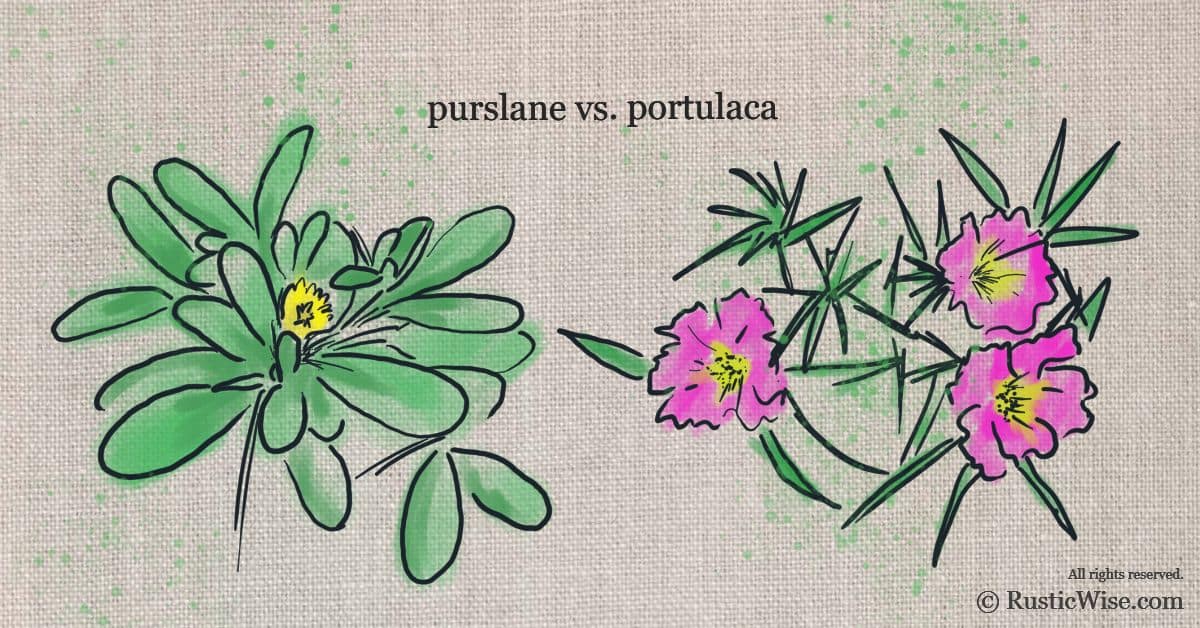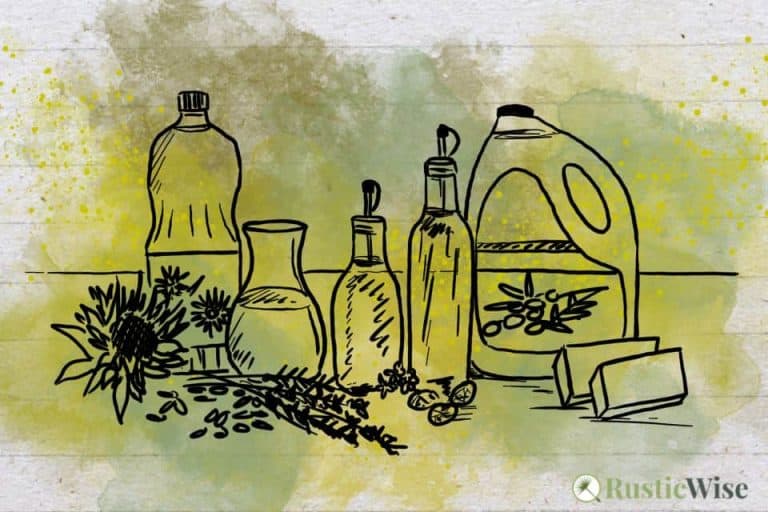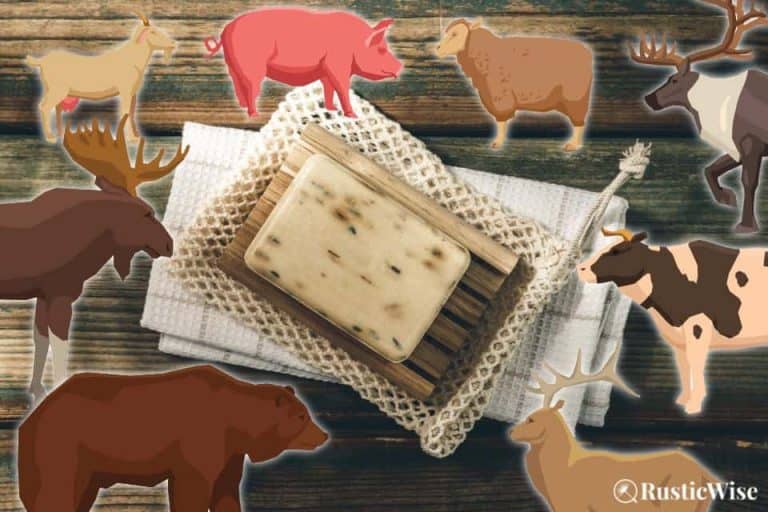Plant Comparison: Purslane vs Portulaca
RusticWise is supported by its readers. When you purchase through links on our site, we may earn an affiliate commission. As an Amazon Associate, we earn from qualifying purchases. Thank You!
There seems to be much confusion amongst gardeners and foragers about the plants purslane and portulaca. So I decided to investigate. Purslane vs portulaca: are they one and the same, or are they different? It turns out they are related and share many of the same properties, but with notable differences. They are different species of the same genus.
Purslane (Portulaca oleracea) is also known as common purslane, pigweed, hogweed, verdologa, and pusley. It’s a member of the Portulacaceae family of which there are more than fifty different types of purslane growing around the world.
This is the type of purslane found growing wild in your garden, in sidewalk cracks and in areas of disturbed soils. While it’s classified as an invasive weed in some areas, others (like myself) actively plant the seeds of purslane and harvest it like any other vegetable. Purslane is also the much coveted prize of foragers who seek this succulent plant for its medicinal and edible properties.
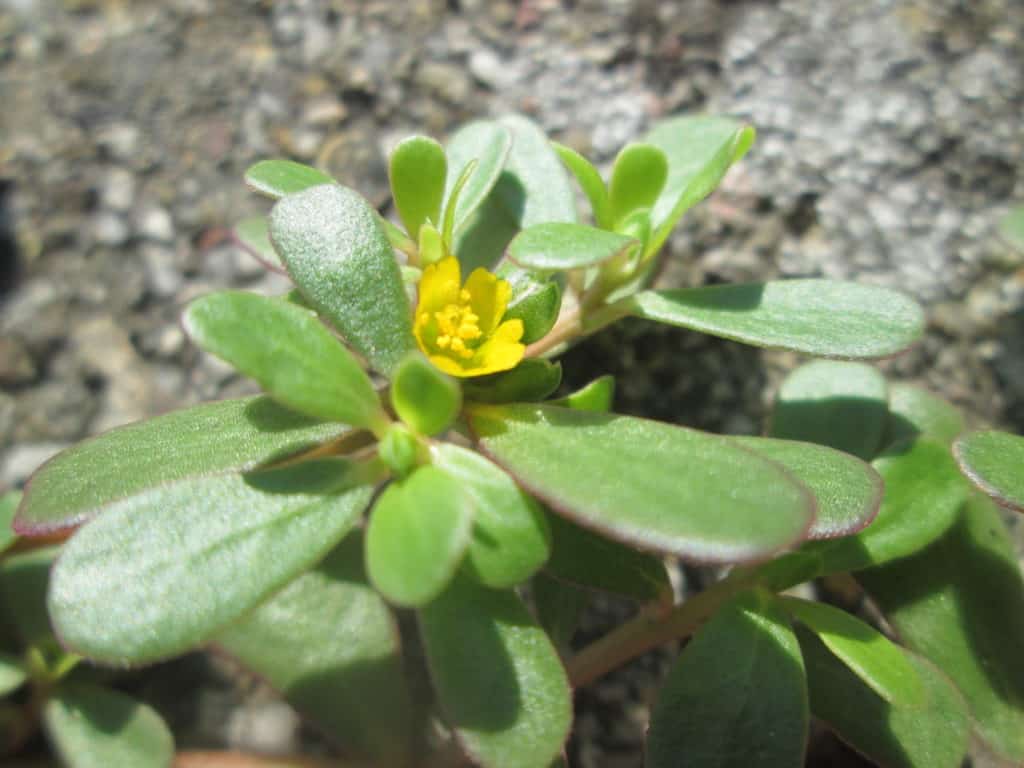
Credit: Andreas Rockstein / Flickr, Portulaca oleracea
Portulaca on the other hand, typically refers to ornamental purslane. There are several varieties of ornamental purslane. The most common being species are Portulaca umbraticola (wingpod purslane), Portulaca sativa (golden purslane); Portulaca grandiflora (cultivated purslane); and Portulaca pilosa (pink purslane).
The confusion seems to arise from the naming of the plant and in particular the labels on plants purchased from a greenhouse. Ornamental purslane is often labelled as portulaca or sometimes moss rose.
Clear as mud? Let’s take a closer look at the similarities and differences.
Want to grow your own?
Purslane vs portulaca: similarities
Purslane and portulaca are both flowered succulent plants that grow close to the ground (although some ornamental types of purslane tend to grow more upright). When planted in pots, they produce lovely flowing tendrils.
Common purslane produces tiny yellow flowers that only open in bright sunshine at dawn. Portulaca also has flowers of yellow, pink or orange that look a bit like tiny carnations or cactus blooms. If you’re looking for “showier” flowers, portulaca doesn’t disappoint. Although like purslane, portulaca flowers also only open for a few hours in the morning and close for the rest of the day.
You need to wake up early to catch a glimpse of these beauties! If you want to enjoy the beautiful flowers, consider hanging a pot with purslane or portulaca near a kitchen window, or somewhere close to where you enjoy your morning coffee.
Both purslane and portulaca have reddish stems.
Both purslane and portulaca thrive in similar conditions. They like sun and sandy soil conditions. They’re hardy and able to withstand drought-like conditions.
They’re both annuals that are known to re-seed themselves (which leads to another confusing debate about whether they’re truly annuals or perennials). If you want to ensure that purslane or portulaca don’t spread their seeds all over your yard, it’s wise to plant them in containers or pots.
Although beauty is subjective, most people would consider purslane the “weed” as a pretty plant (it sort of looks like a jade plant), and clearly people buying ornamental portulaca find them attractive.
As far as ornamental plants go, portulaca is pretty low-maintenance. Stick them somewhere sunny and they’re happy.
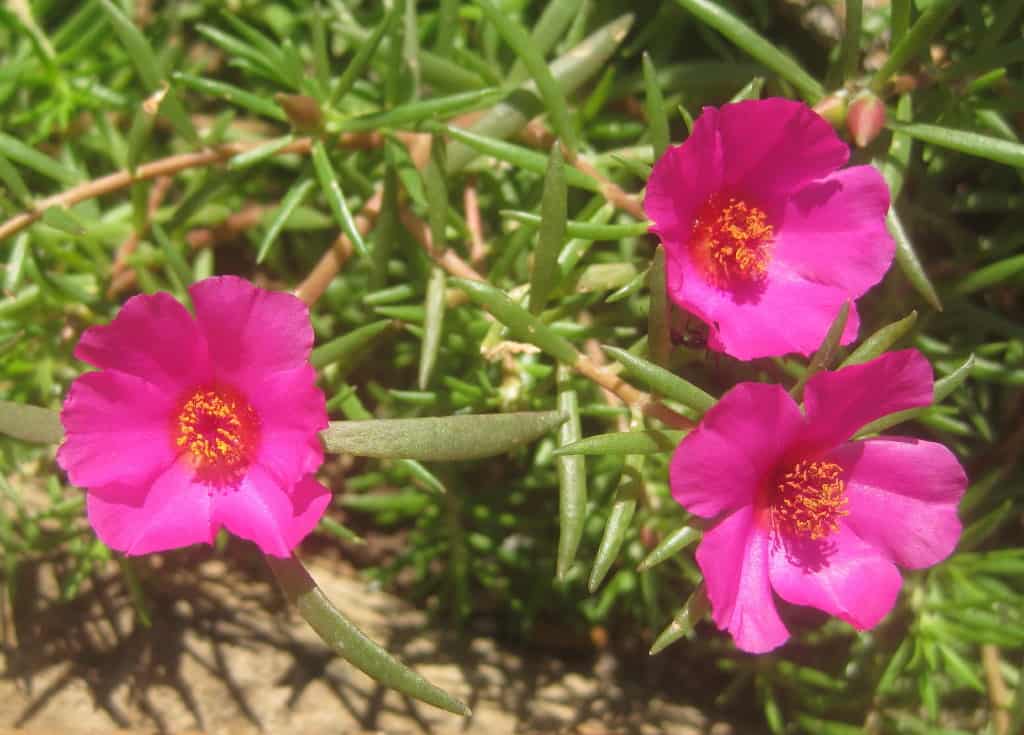
Credit: Ton Rulkens / Flickr, Portulaca grandiflora – pink
Purslane vs portulaca: differences
The leaves of common purslane are wider and round-shaped like paddles. Portulaca has skinnier, more needle-like leaves.
Purslane typically has smaller, single flowers. Portulaca’s flowers are bigger, showier, and often appear as doubles. Purslane has a longer growing season whereas portulaca generally only lasts about eight weeks.2
Perhaps the biggest difference between common purslane and ornamental portulaca is their edibility. Purslane, the kind growing wild in your yard is perfectly edible, whereas some ornamental varieties like Portulaca grandiflora (moss rose) are not. Moss rose supposedly has an unpleasant bitter taste.
Other varieties of purslane such as Portulaca sativa (golden purslane) and Portulaca pilosa (pink purslane) are edible. Golden purslane is used similarly to common purslane. Portulaca umbraticola (wingpod purslane) is also edible.
I’ve never personally tried eating any of the ornamental varieties of Portulaca, but have enjoyed the taste of common purslane very much! It has a mild, tangy flavor with fresh leaves providing a satisfying crunch.
What you need to know
Both purslane and portulaca produce seeds like mad! Each plant can produce thousands of seeds with one study showing that purslane seeds were still viable even after 40 years.
If you want to keep these plants from popping up all over your yard, it’s best to plant them in containers. Although if these succulents re-seed themselves, it might be a pleasant surprise (or a nuisance) depending on your stance on purslane.
To help prevent the spread of seeds of ornamental portulaca, you can try plucking the withered blooms off the plant—nip it in the bud, so to speak. Not only will this help prevent the spread of seeds, it also allows the plant to redirect more energy on producing new blooms.
Conclusion
So hopefully this helps clear up what the differences are between purslane vs portulaca. They are both members of the Portulacaceae family and are both annual succulent plants that produce flowers. They are different species of the same genus. Purslane (Portulaca oleracea) is the common edible “weed” found in your garden whereas portulaca is generally ornamental.
So if you’re hoping to cultivate your own common purslane for edible or medicinal purposes, look for the seeds labelled Portulaca oleracea. This is the “weed” and most common species of purslane. You could also try golden purslane (Portulaca sativa) and Portulaca pilosa (pink purslane) which are edible as well.
If you’re only wanting an ornamental flowering succulent plant, then stick with moss rose (Portulaca grandiflora).
👉 If you like this post, see our Timeless Guide To Foraging for Wild Food. 🌿
Would you like more timeless tips via email?
Fun tips to help you live an independent, self-sustaining lifestyle. Opt-out at any time.


References:
- Blair, Katrina (2014). The Wild Wisdom of Weeds: 13 Essential Plants for Human Survival. Chelsea Green Publishing. ISBN 978-1-60358-516-3.
- LSU AgCenter, Purslane and portulaca are related but very different, https://www.youtube.com/watch?v=JPr6IT6oNKY. Accessed March 2020.
- CAB International, Invasive Species Compendium, Datasheet: Portulaca oleracea (purslane): https://www.cabi.org/isc/datasheet/43609. Accessed March 2020.

Author: Josh Tesolin
Josh is co-founder of RusticWise. When he’s not tinkering in the garden, or fixing something around the house, you can find him working on a vast array of random side projects.

